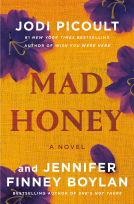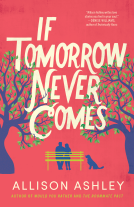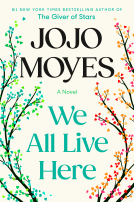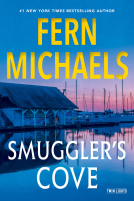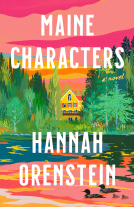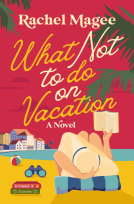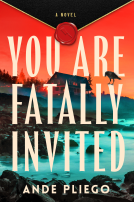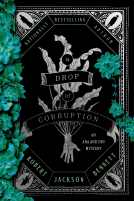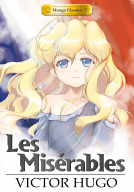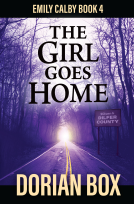
Michael Pearson's Traditional Knitting
Aran, Fair Isle and Fisher Ganseys, New & Expanded Edition
by Michael Pearson
This title was previously available on NetGalley and is now archived.
Send NetGalley books directly to your Kindle or Kindle app
1
To read on a Kindle or Kindle app, please add kindle@netgalley.com as an approved email address to receive files in your Amazon account. Click here for step-by-step instructions.
2
Also find your Kindle email address within your Amazon account, and enter it here.
Pub Date Mar 18 2015 | Archive Date Jun 15 2015
Description
"For years knitters have been pining for the return of Michael Pearson's lovely book, Traditional Knitting, complete with historical notes, charts, photos and patterns for Fair Isle, Guernsey, and Aran sweaters. Once again, our wish is granted by dear Dover." — Meg Swansen, Schoolhouse Press
"A fascinating and well researched book." — Evening Press
After visiting the remote fishing villages of Scotland and England, Michael Pearson compiled this extensive record of unique patterns. His sources include oral traditions, documents, family albums, and photos. Pearson combines a social history of the villages and the living history of these crafts with detailed patterns and practical instructions for knitters. For this revised and expanded edition, the author has added an extensive selection of new pattern charts and full knitting instructions, making this essential work even more valuable to lovers of traditional knitting.
Available Editions
| EDITION | Paperback |
| ISBN | 9780486460536 |
| PRICE | $22.95 (USD) |
Average rating from 47 members
Featured Reviews
 Kaye T, Reviewer
Kaye T, Reviewer
A good book, with a nice history of the styles from the British Isles. Love the old pictures and the multiple stories they tell. Definitely patterns for more advanced knitters though. Perhaps a few more for the beginner or novice at least would have been nice. Some beautiful patterns that will make you very wishful! Highly recommend.
 debbie a, Reviewer
debbie a, Reviewer
I am so happy to have this book. Great collection of patterns. So much history. I learned so many interesting things. The pictures were amazing and definitely my favorite part. A history and knitting lesson wrapped up in one book.
 Polly K, Reviewer
Polly K, Reviewer
A meticulous, well-researched study of the traditional knitting styles of the United Kingdom. The photographs of local knitters, their knitting tools and the grid style patterns all serve to create a detailed look at diverse knitting styles. Not just a knitting pattern book at all.
 Elizabeth S, Reviewer
Elizabeth S, Reviewer
The copy I reviewed was an early version that had not yet been fully prepared for ebook publication. It had several typos and other typography issues. However the content is quite good. It provides a brief overview of the history of knitting with focus on the UK. The author then travels to communities to talk to locals about the history of knitting in the community and individual family histories. With each segment patterns are shared. The author even shared the story of the one family who did not choose to share their family knitting patterns.
The book is a practical capture of of the traditional knitting patterns at the time when the community and family knit histories are fading away.
 Meagan L, Educator
Meagan L, Educator
I received a copy of this book from Netgalley in exchange for an honest review:
I'm a beginning knitter so I was really really excited to get my hands on this book! It's not exactly the easiest of entry level texts but the history surrounding this craft is fascinating and Pearson does such a great job of weaving in history with patterns and it's definitely worth the read if you're interested in classic knits.
I love the way that each pattern has some history behind it and pictures of the people in these patterns and the people making these items. There is so much fun trivia about the whys and hows of these patterns.
I did find it a bit difficult to navigate due to the fact that I received a kindle version but I think that is really just an ebook issue. I think that getting my hands on a copy of this in the physical form will probably help me out a lot because sometimes I didn't even realize we were in the middle of a pattern!
I also definitely think you need to know what you're doing a bit more before trying most of these because they're not exactly geared towards beginners.
 Paula D, Reviewer
Paula D, Reviewer
Dr. Pearson has written a passionate book about the traditional knitting culture of the British Isles (England, Scotland, Fair Isle and Ireland). This book is the story of his extensive endeavors to record these knitting traditions and their cultural backgrounds before the modernization of the last quarter of the twentieth century either modified them beyond recognition or destroyed them.
In my opinion, he is quite successful. He writes well and comes across as an affable person who could charm his way into any small village and obtain the villagers' complete cooperation in discussing their knitting traditions, which can be very deep and ancient.
The book includes discussions of the stitch patterns, garment styles, use and history of the knitting traditions of each village and area he visited. And there are a lot of them. There a numerous illustrations, all either black and white or color photos. And there are complete knitting patterns of some of the traditional garments.
An excellent reference book, and a must read for any knitter who wants to know about the history and craft of knitting. I highly recommend it. It is truly educational (and I have now read both editions of this book!).
Wonderful book, Dr. Pearson!
 Cathy G, Reviewer
Cathy G, Reviewer
Fascinating, factual, informative, current and historical information related to Gansey, Fair Isle and Aran knitting fills the pages of this book. With over fifty years of knitting so far under my belt I have learned a GREAT deal that I did not know before. Original knitting guild members were male, knitting became a way to augment income, women were able to knit a sweater much faster than I am able to, special devices I had never heard of were used by knitters to facilitate the process, people carried their knitting with them almost everywhere, Gansey sweaters have purl stitches that form patterns while Aran sweaters use knit stitches to do so instead, gussets were made under the arms, reworking sweaters was easier using the methods and patterns described in this book…I could go on but I have to say that this is one very intriguing book and I am thankful to Net Galley and Dover Publications for the opportunity to read and review this book.
 Patricia B, Reviewer
Patricia B, Reviewer
I feel so lucky to have found this wonderful book. A virtual trip around Britain, describing a place in words and old photographs, the traditions, maybe just before they are lost forever. Then the style of knitting and a pattern with credit to it's provenance and the recipe to reproduce it in the readers own knitting.
This is more than a knitting book, the illustrations alone are amazing. I find myself looking at them again and again.
Have you heard of the Cappers Act of 1571? it's fascinating and shows the importance of the wool trade.
There's a wonderful Gansey sweater knitted in 60 hours and the name of the knitter and dates!How important it was for the women to knit a sweater for the fisherman or life boat husbands and the skill and pride in them.
I encourage knitters to read this book, it's a book to treasure and return to again and again.
 Janet P, Reviewer
Janet P, Reviewer
This is not a book of knitting patterns, although some are included. It is however an in-depth history of traditional sweaters worn in England by fishermen, farmers and other laborers.
One of the great things about histories such as this is that they are use oral history, the stories, memories, and patterns of the women who knit these sweaters. Pearson writes in this great tradition of folklore collecting, going from village to village, sitting in the local pub, and welcoming folks to come talk to him.
It's a worthy addition to our understanding of knitting.
 Reviewer 135956
Reviewer 135956
Michael Pearson's Traditional Knitting is an new and expanded edition of a book that was first released in 1984. In this book, Michael Pearson travels through the knitting communities of the British Isles, investigating the knitting traditions of each community. Here is a map of the places he travelled.
Pearson recounts how his method for finding out about the local knitting tradition changed in the researching for this book. Originally, he would arrive at the local tavern, order a pint and then strike up a conversation with a man who was wearing a handknit jumper. He says:
"On spotting a likely candidate, past experience even in those early days had taught me not to blast my way in, tap my chosen target on the shoulder and, by way of introducing myself, explain that I found the pattern on his gansey most intriguing. I also learned never to interrupt that most serious of games—dominoes. Apart from causing the poor fellow to splutter his pint over those dominoes, looking desperately for a way out, this approach somehow reduced the possibility of meeting the knitter, who, of course, was usually his wife. By then, having politely answered my questions (we were, after all, talking about a subject of common interest) it was usually too much for him to continue."
Seriously, what an adorable story! After a few towns, he started phoning ahead to introduce himself to the pub owner, who alerted the gansey-wearing men to Pearson's arrival and created a much more information-sharing friendly environment. And he certainly got a lot of information! Now I know that an entire cottage knitting industry existed, where women and children pumped out incredible amounts of handknitting for sale, and that this knitting industry largely collapsed when knitting machines were invented. I also now know that ganseys were invented because the gansey patterns, which combine knit and purl stitches, used extra wool, hence captured more warmth, which was vitally important for me who were out on a fishing boat all day. These patterns or combinations of stitches were usually family or village specific. Ganseys were knitted in the round on six or eight very long DPNs (which, incidentally, I tried after reading about in this book. I could not do it! I kept stabbing myself with all and could not get into a knitting rhythm.) Sizes were described in terms of how many repeats it would take to go around the torso - so a man might be a "sixteener" or "eighteener" (sixteen or eighteen repeats respectively).
Where possible, Pearson spoke to the knitter or knitter's descendants directly. However, even in the 1980s when this research was conducted, social and cultural changes in these towns meant that the rich local cultures that had previously existed were slowly disintegrating. Houses were being bought by weekenders, who only lived in the towns on the weekends, reducing the vitality of the towns. Additionally, fishing practices had changed, and the hard fishing lifestyle lived by the men and women in these town was often no longer viable. Where there were no knitters remaining, Pearson used archival resources such as local museums and photographs. The photographs of knitters and knitting throughout the book are really fascinating (although only the section on fair isle is in colour).
I like to knit and I like to read but I rarely read books about knitting other than pattern books. Although this book does contain some gansey and fair isle patterns, it is primarily a history rather than a pattern book. Traditional Knitting a fascinating insight into knitting and its history. It was not what I thought it would be when I picked up but I am so pleased to have read it. I know I said I would never knit another jumper but, after finishing this book, I kind of want to knit a gansey... (on a circular needle. I am not completely crazy!)
 Pearl D, Educator
Pearl D, Educator
This is a well written and beautifully heartfelt history of knitting. I couldn't put it down once I started!
 Becca P, Librarian
Becca P, Librarian
Really interesting history and context combined with lovely knitting patterns make this a must have for serious knitters.
 Rebecca H, Reviewer
Rebecca H, Reviewer
This is a wonderful book for a specialized reader. It has history, economics, and geography combined with the author's personal travelogue and quest to learn about the history of knitting among the fishing families of Northern England.
There's also knitting, including patterns. However, they will only be useful to experienced knitters. They include sentences like, "Continue in plain knitting for 12 inches, increasing evenly to 320 stitches," and "heart, 13 sts & 17 rds, 2 vertical double moss columns..."
There are a few patterns fully written out and some charted patterns, and experienced knitters will love the treasure trove of casually written instructions. The photos in this book are a treasure, too. Altogether, the book is a wonderful slice of a life from the past and an opportunity to create traditional sweaters in the most authentic way.
 Christine L, Educator
Christine L, Educator
I really enjoyed learning the history behind the knitting, as well as the patterns. Easy to read & understand. Now to gather some yarn...
 Frances M, Reviewer
Frances M, Reviewer
These designs are beautiful! If I ever get up the courage to attempt to juggle many strands of yarn, I will definitely look for this again!
Readers who liked this book also liked:
Jodi Picoult; Jennifer Finney Boylan
General Fiction (Adult), Literary Fiction, Women's Fiction
